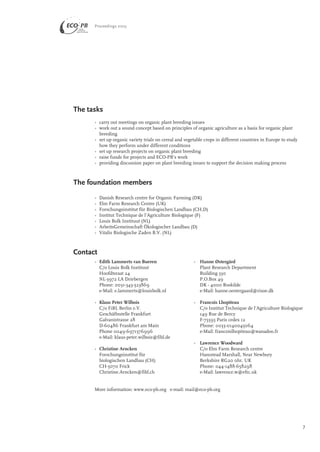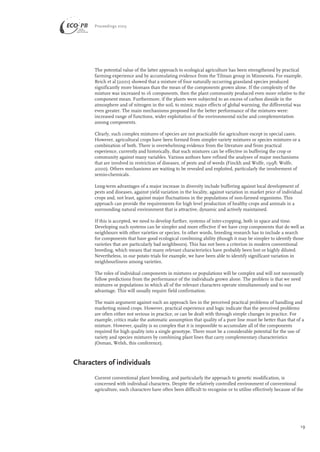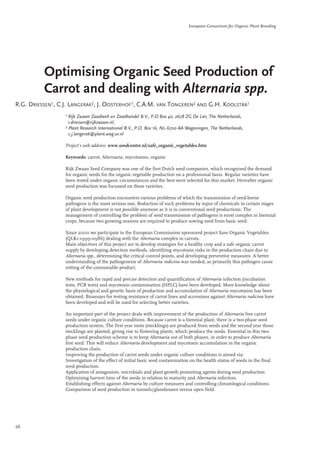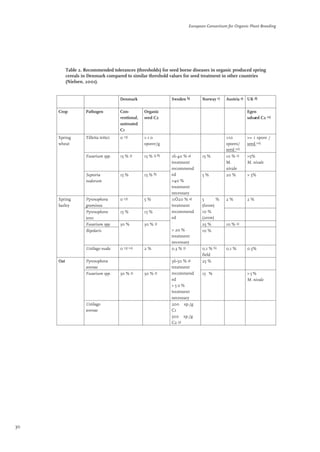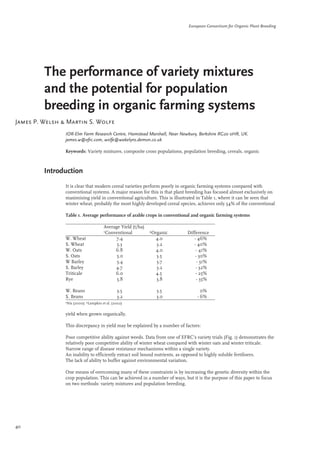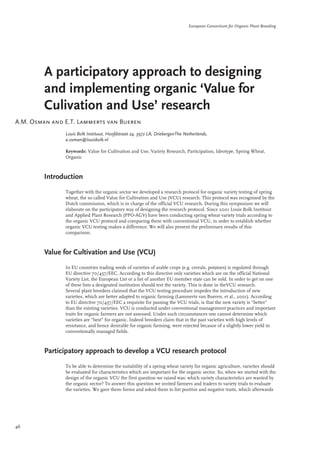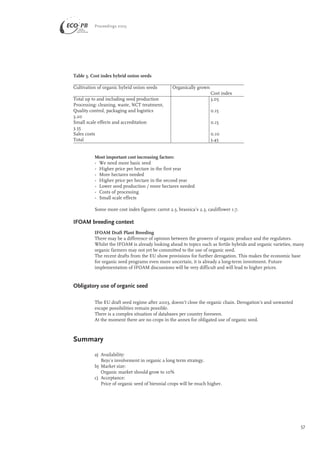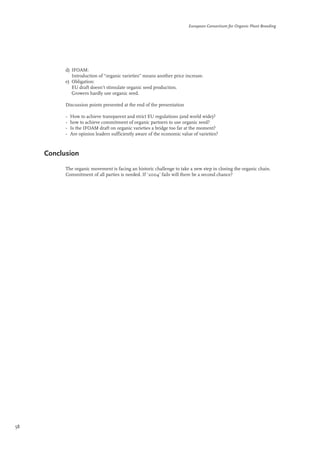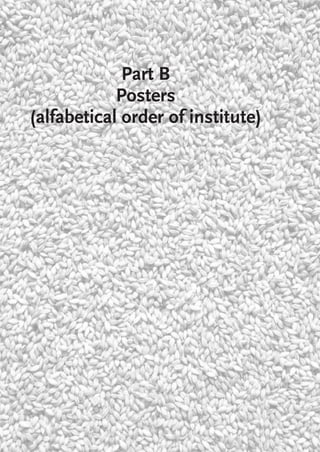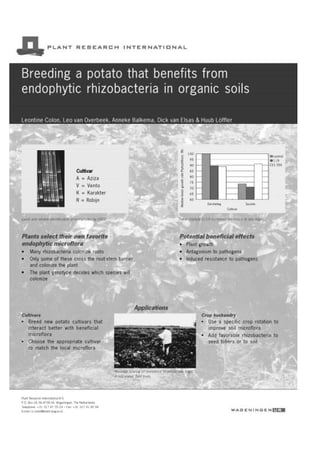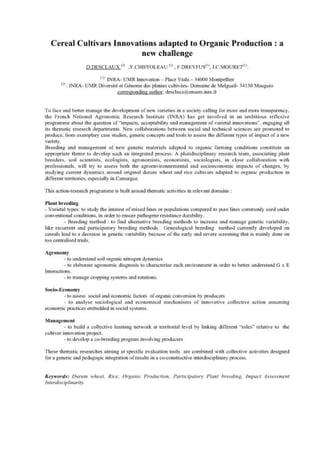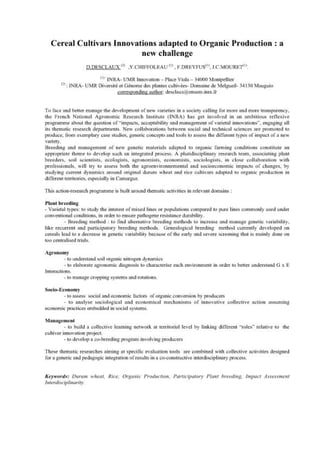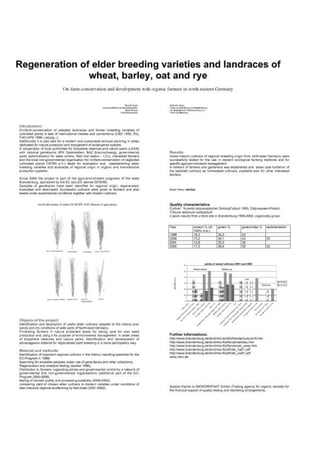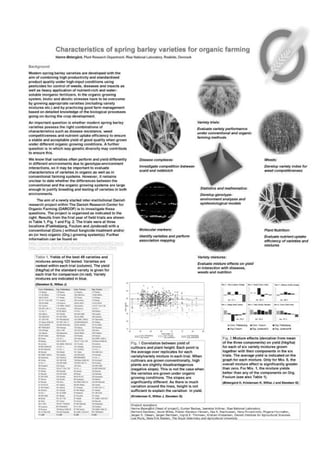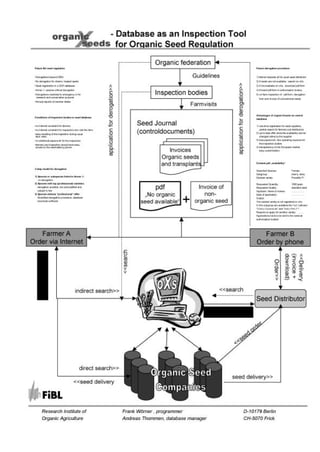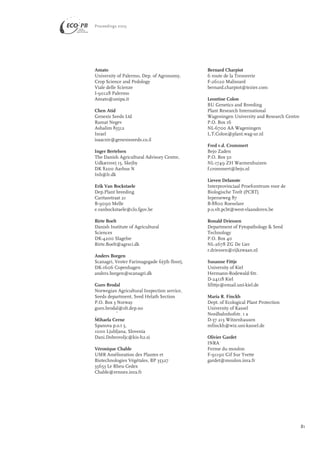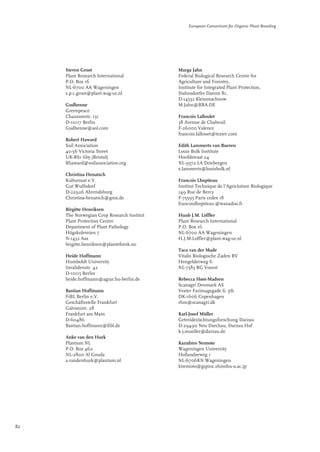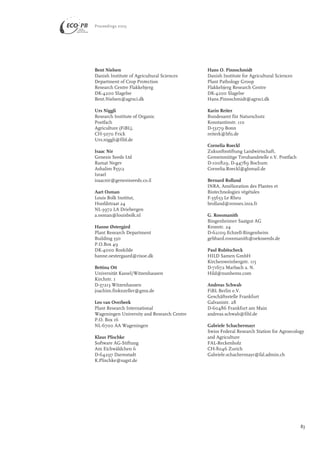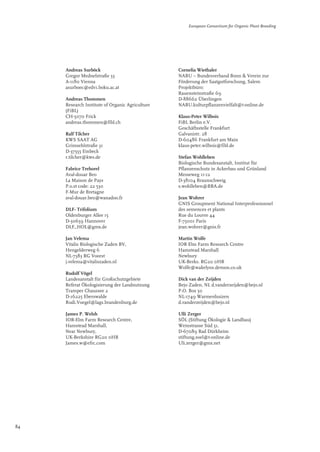This document summarizes the opening remarks from Alexander Müller from the German Federal Ministry of Consumer Protection, Food and Agriculture at ECO-PB's first international symposium on organic seed production and plant breeding in Berlin in 2002. Key points include:
- Müller welcomed the participants to Berlin on behalf of the German government.
- He noted the importance of further developing the Common Agricultural Policy (CAP) within the EU to support rural development and jobs as well as a viable infrastructure in rural areas.
- In Germany, agri-environmental measures within the Joint Task for the Improvement of Agricultural Structures and Coastal Protection (GAK) help ensure difficult locations can still be farmed, including by






